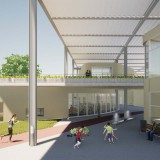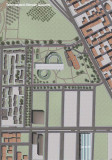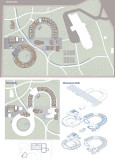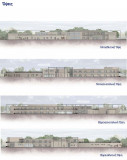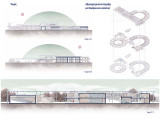Supervisors:
2024
The thesis concerns the creation of a model center of care, coexistence and intergenerational learning that brings together two age groups: infants from 2 to 6 years and elderly people from 65 years and above, who are self sufficient. The work captures the general features, the building program and the design of indoor and outdoor spaces of the center with mainly seeking radically revising the established standards, typologies, and architectures of care spaces such as "kindengarden" and "nursery home". The proposed hybrid care and coexistence center offers accommodation options for the elderly, kindergarten educational facilities, daily employment for both age groups, the possibility of socialisation separately for each age group as well as learning and creative employment activities between the two age groups. The activities are developed in properly designed indoor spaces but also in outdoor covered or outdoor spaces, which will also include spaces for crops. Our architectural proposal is also studied in terms of energy, with material selection, bioclimatic design and the use of appropriate systems, ensuring buildings with low energy consumption. At the same time, the subject of urban agriculture it is brought to the forefront to a provincial place and within the urban set, creating a relatively autonomous community. Through the combination of innovative design approaches, our thesis attempts to propose alternative models of care spaces while also creating experimental architectures that take care of the occupants, the neighborhood and the environment.
